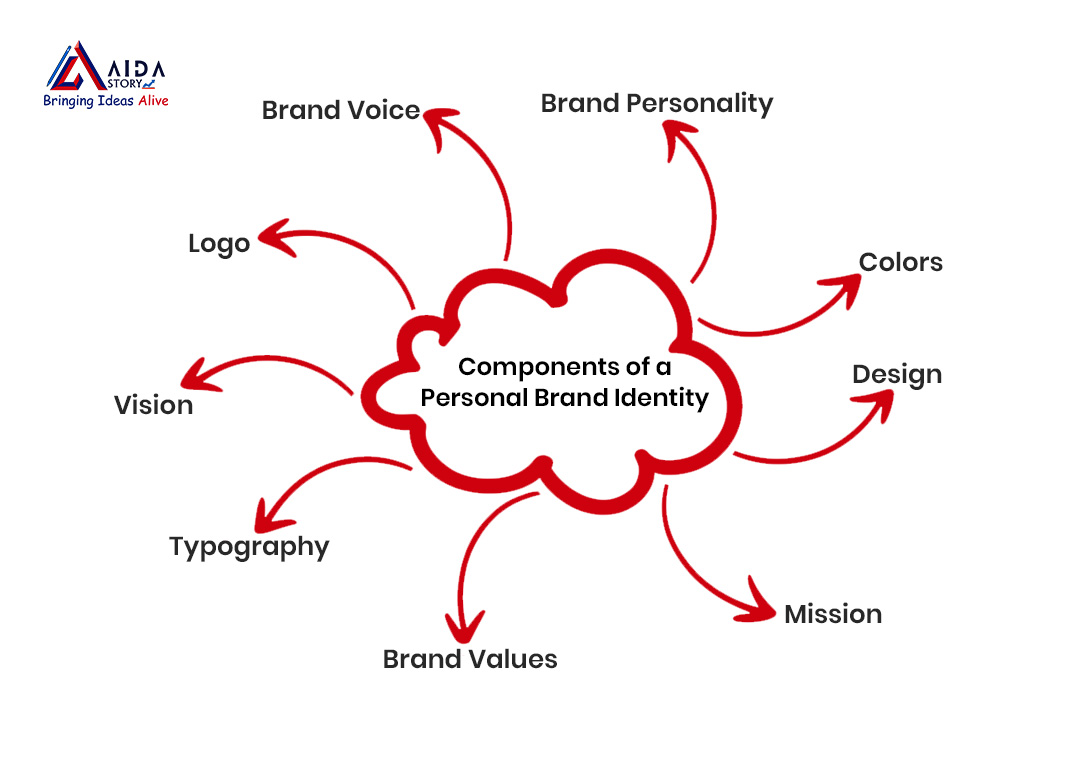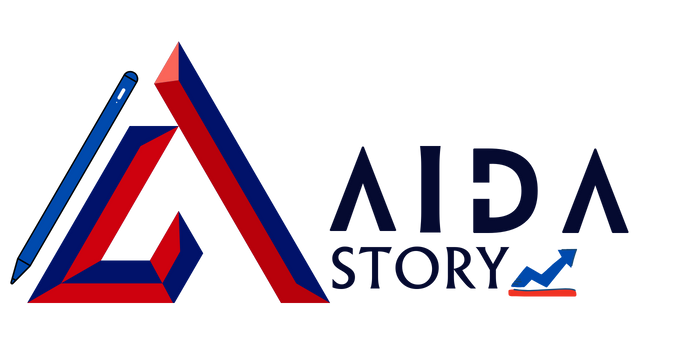Your persona is as valuable as your certifications and credentials, especially in today’s digital world. Where your resume or LinkedIn profile does not take you, this is the most important thing—identity and image.
The very essence of personal brand identity is built on personal brand attributes. These assets constitute your professional persona and differentiate you in a competitive world.
For entrepreneurs, independent workers, or even regular job seekers, developing consistency and uniqueness that can sustain a person’s brand throughout their career is of utter importance.
These attributes influence your narrative, define what you offer the world, and allow you to be real with your audience.
The essentials of building a strong personal brand are rooted in self-profiling. What makes you unique? What values drive you?
The more precise you are regarding your brand attributes, the easier it is to demonstrate them and find the right niche.
In this article, the author concentrates on the components of your brand, why it is essential to pay attention to them, and the steps one needs to follow to make a proper definition and presentation of personal brands.
We will also look at materials and measures that you can use to grow your brand visibility.
The Idea of Defining Personal Brand Attributes

Lobster attributes refer to personality characteristics that make a personal brand unique from the other competing brands. They include:
Core Values: These are the things that underpin your organization’s existence and which one holds dear, including integrity, innovation, or empathy.
Unique Skills: These are your niche skills or capabilities that make you unique or excellent at something, such as managing crises, policy formulation, the arts, or innovation.
Personality Traits: How you are predisposed to behave and act in social circles; traits such as rebounding ability, versatility among others.
Professional Identity encompasses a person’s reputation, accomplishments, and positioning in the marketplace.
For instance, Serena Williams. Discipline, resilience, and empowerment sum up her personality or personal brand. They include her play at the tennis court and the fight for Gender and Racial equality or integration.
Her brand transcends sports: This is by far my favorite of the three; more than being a successful basketball player, founder of multiple clothing companies, model, and children’s book writer, Hadid’s brand goes even further.
What Are Personal Brand Attributes?
Brand attributes are your professional profile and chromosomes. It defines how others perceive you and consistently affects your relationships, potential, and success. Here’s why they matter:
Authenticity: For your brand to be authentic, your attributes must reflect who you are as a person, thus earning the trust of an audience.
Differentiation: If people can barely differentiate between similar service providers, then peculiar qualities make them stand out.
Consistency: Clear attributes improve your chances of establishing congruent brand communication online and offline.
Career Advancement: They assist you in building credibility in your specialty or becoming a go-to choice in your market.
A real and vivid example of this is Oprah Winfrey. Her personality and compassionate approach make her popular with people in different fields.
Whether in television advertising or social media, the attributes remain the same and are believable.
This resource goes deeper into unraveling who you are by defining and establishing your personal brand and ways of packaging and marketing it.
Identifying an individual brand’s personality
Establishing an individual image is a prologue to creating a firm personal brand. Here are five steps to help you identify your key attributes:
Assess Your Strengths: List skills, talents, and accomplishments that you consider successful.
Clarify Your Values: Explain the foundations on which the future choices and actions will rely on.
Gather Feedback: One way to benefit from consulting is to ask other colleagues, mentors, or friends about one of the strengths.
Analyze Your Personality: Consider how your trait reacts in social relations and affects your daily life.
Define Your Goals: Some attributes will help you achieve your career goals more effectively than others.
Self identity management is matching internal identity claims to externally offered identities.
For instance, if you believe that innovation is one of the key competencies, you must act and speak accordingly.
This concept requires time and sometimes self-analysis to complete the identified process. The attributes you choose should be related to who you are, not to who you want to appear to be.
For insights on modern approaches to personal branding, Harvard Business Review’s guide offers actionable advice.
The Strengths and Weaknesses of Personal Brand Personality Attributes

The Good: How Positive Attributes Create Value
Clarity: This research acknowledges well-developed personal brand attributes as precision signifying one’s identity. This way, anybody willing to learn more about you and why you deserve their attention
Professional Growth: When you repeatedly present yourself in the best light, you establish the foundation for your esteem as an expert and trustworthy individual.
Networking Opportunities: A good brand defines itself well and tends to attract like-minded professionals in the business world, creating numerous avenues of growth.
Trust Building: Hospitality, respect, and punctuality build a strong base of trust because professional relations require time and solid trustful relations.
Real-Life Example:
Let’s consider Richard Branson, the founder of Virgin Group. The qualities associated with his brand identity—adventurous, innovative, and approachable—have enabled him to create a firm and a following of customers who identify with him.
The Bad: The most common errors people make
However, personal brand attributes can also have negative impacts if not managed effectively:
Inconsistency: I have noted that people should be careful not to confuse their viewers or readers by giving contradicting signals concerning their values or skills.
Inauthenticity: To many people, perceived authenticity communicates better than any other attribute, the idea that something is uncontrolled and natural rather than contrived.
Neglect: Lack of brand stewardship or revisiting the brand can lead to behaviors that give the impression that the brand is inactive.
Negative Attributes: It is self-explanatory, but characteristics like arrogance, unreliability, or poor communication harm the brand and thwart opportunities.
Real-Life Example:
Think about people – they may be your colleagues or your subordinates – who refuse to recognize their shortcomings or those who overestimate their abilities and do not accomplish what they have promised.
Over time, such behaviors disintegrate public trust and reduce one’s credibility. For example, leaders who have been associated with a scandal always seem to have difficulty reintroducing their brands because of the elements of deceit or contradiction.
Showcasing Your Brand Attributes
Now that you understand and perhaps define your brand’s key attributes, the next strategy in this process is to promote those attributes. Here’s how:
Create an Online Presence: Make an appropriate LinkedIn, Digits, blog, or portfolio account devoted to your specialization and personality.
For example, LinkedIn is a great place to repost articles on your company’s or personal position in thought leadership or to connect with professionals.
Network Strategically: Communicate meaningfully what embodies your belief system and what you are proficient in.
Ultimately, this means making contacts who are right for your product or service—this could be done by attending trade fairs or participating in webinars.
Be Consistent: Continuously try to keep your branding message consistent by following the form of your emails and LinkedIn account.
Routine makes people comfortable and confident.
Share Your Story: If the attributes are to be brought alive and made memorable, there is no better approach than authentic storytelling.
Make sure to give real-life examples organized around your life’s employment, challenge, and success periods.
For example, if one of the values is empathy, let the company show how the employee assisted their partner through a difficult experience.
It follows that the development of your customer’s brand attributes is holistic.
Personal branding is not a one-time affair. Your attributes will also change with time and change in your career or personal life.
Things that can be effective when you’re a college graduate may not be appealing when you’re an industry giant. It is important for a brand to evolve to hide the real you, to be constant and genuine.
Why Evolution Matters:
New Opportunities: Your purpose at one point can be different from the one you set at a later date, and hence, you need to improve on it.
Market Trends: Businesses change, and you will be outcompeted if your brand does not keep up with the changes.
Personal Growth: Your values and attributes will change depending on self and professional development. These are new changes that are part of brand development.
An easy example is Michelle Obama. Her brand developed from lawyer to First Lady, Education advocate, and writer.
The attributes are intelligence, compassion, and empowerment, and perhaps they are still relevant despite the change of course.
Applications And Instruments For Personal Branding

There are several existing techniques and media technologies available to enhance your brand. Some of the best ones include:
LinkedIn: Perfect for business and coming up with significant expertise.
Twitter: Excellent for sharing knowledge and interacting in current or hot topics.
Personal Website: Since a portfolio site can be the core site, it is convenient to post your achievements here.
Content Creation Tools: Applications such as Canva and Medium assist you in the necessary presentation of effective content.
If you are looking for more specific solutions, you can find tools and ideas here to create a message that conveys the essence of your business to the public using AIDA Story.
Conclusion
Brand attributes are special characteristics that set out who and what you are in the eyes of the world. It is possible to develop a unique and meaningful brand voice and presence from which audiences can immediately understand.
The key attributes of a brand by doing the following: Trust, distinction, and career growth are all founded on and guided by your ultimate resource—your personal brand.
This will help you avoid presenting a skewed opinion of yourself and will allow you to present your ideal self without presenting yourself in a bad light.
Begin this process today and leave your special impression on society and the world in general!!! To find more information, go to AIDA Story to learn how to take your brand to another level.
FAQs
What is a personal brand attribute?
Personal brand attributes are the distinct, opposite, and elective features based on which millions of talent hunters evaluate the candidates. They set you apart from other people and dictate how others see you.
Why are personal brand attributes essential?
They assist you in creating authenticity, establishing uniqueness, and obtaining the trust of the audience in relation to a chosen field. They also help you complete work that furthers your personal and professional development.
How do I define and recognize my personal brand attributes?
Evaluate your assets, identify your beliefs, obtain information about yourself, assess your personality profile, and match your objectives to the brand.
What happens when I do not align the personal brand attributes?
If you don’t pay attention to your brand, you’ll lose out on market space, key messages, and the public’s trust.
What is the best way to promote my own personal brand attributes?
To market your strengths, do not just scream them throughout the digital world. Employ consistent messaging, blogging, storytelling, and efficient networking.



